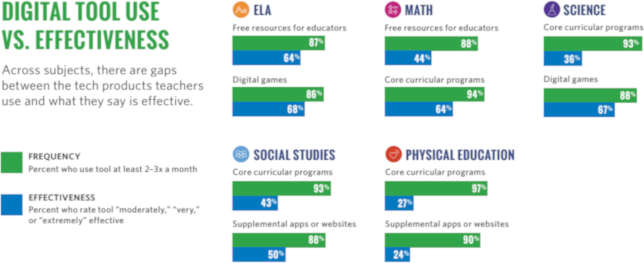Ed Tech Trends
How Teachers Use Technology in the Classroom
Nearly all teachers — 95 percent — are using technology in the classroom nowadays. Elementary and middle school grades dominate when it comes to tech usage. What are the most popular tools?
Video streaming beats out all others, according to a report released by Common Sense Education. Some 60 percent of teachers use video steaming services, such as YouTube, in the classroom. That’s followed by productivity and presentation tools like Microsoft Office and Google G Suite for Education at 54 percent. The social media category was teachers’ least favorite type of tool, with just 13 percent of teachers reporting they use social media in the classroom.
Interestingly, some of the least-used tools in the classroom are those teachers rate as most effective for engaging students in learning.
-
Health and wellbeing tools, used by just 25 percent of classroom teachers, were rated effective by 75 percent of respondents.
-
Digital creation tools, also used by 25 percent of teachers, came in with a 73 percent of respondents saying these tools are effective for engaging students in learning.
-
Assistive technology, used by 29 percent of educators, was rated by 69 percent of them as effective. (Unexpectedly, 24 percent of teachers said they think assistive technology gives the students who use it an “unfair” advantage over those who don’t.)

Source: Common Sense Education
The report, The Common Sense Census: Inside the 21st-Century Classroom, polled a nationally representative sample of more than 1,200 K–12 teachers to gauge the state of education technology in America’s classrooms and explore “what it takes to support teachers and prepare students as schools navigate the growing presence of technology.”
Other findings included:
-
80 percent of teachers have computing devices in their classrooms.
-
40 percent have 1-to-1 devices.
-
Another 30 percent have devices for use by five or fewer students apiece.
-
16 percent reported being in BYOD classrooms. That percentage was higher in schools in affluent areas (20 percent) than non-affluent ones (13 percent).
-
A small but significant percentage of teachers, 12 percent, said the majority of their students did not have access to the internet or a computer at home.
The complete report, as well as a summary of key findings, can be freely accessed on Common Sense’s site.